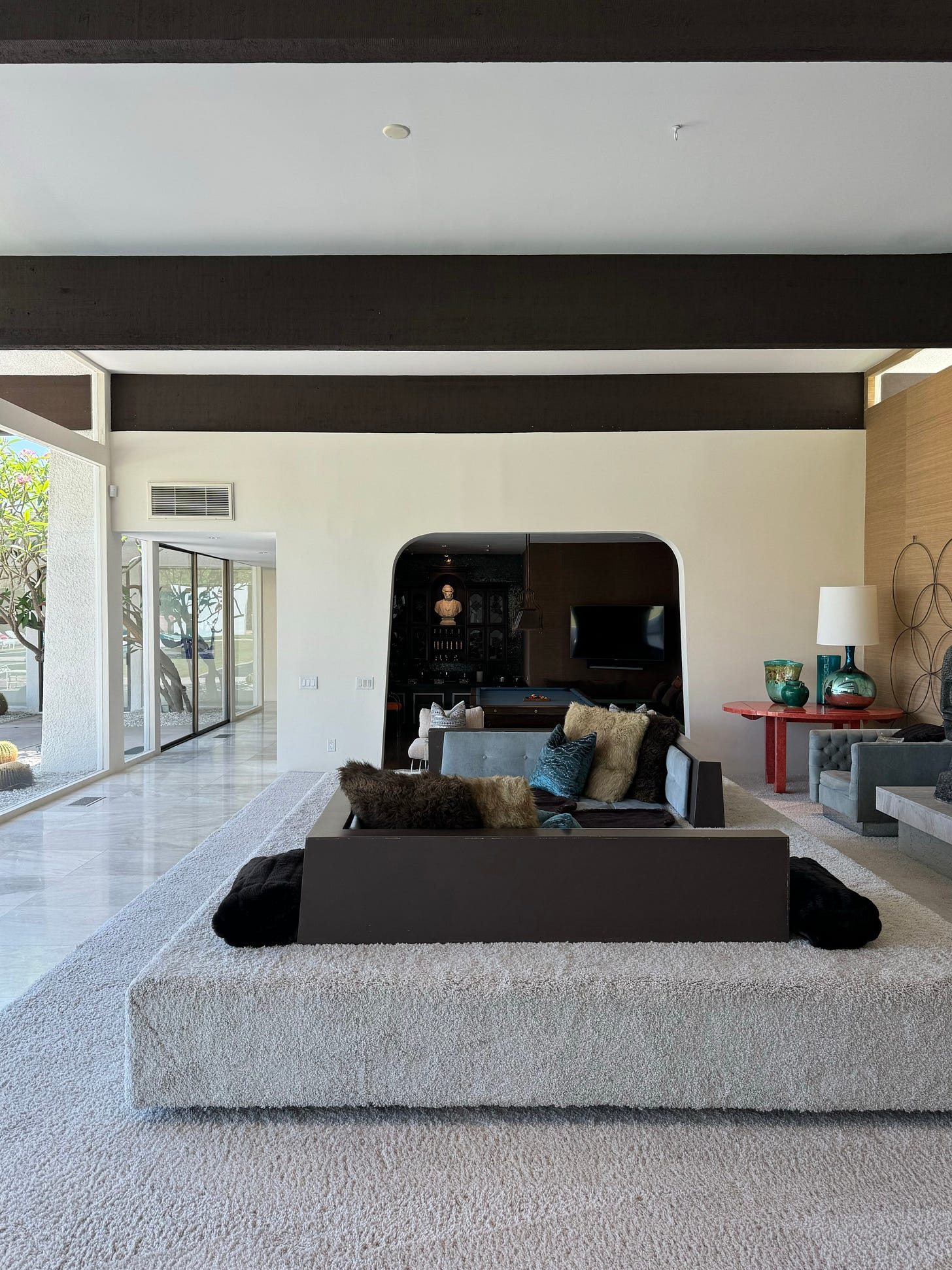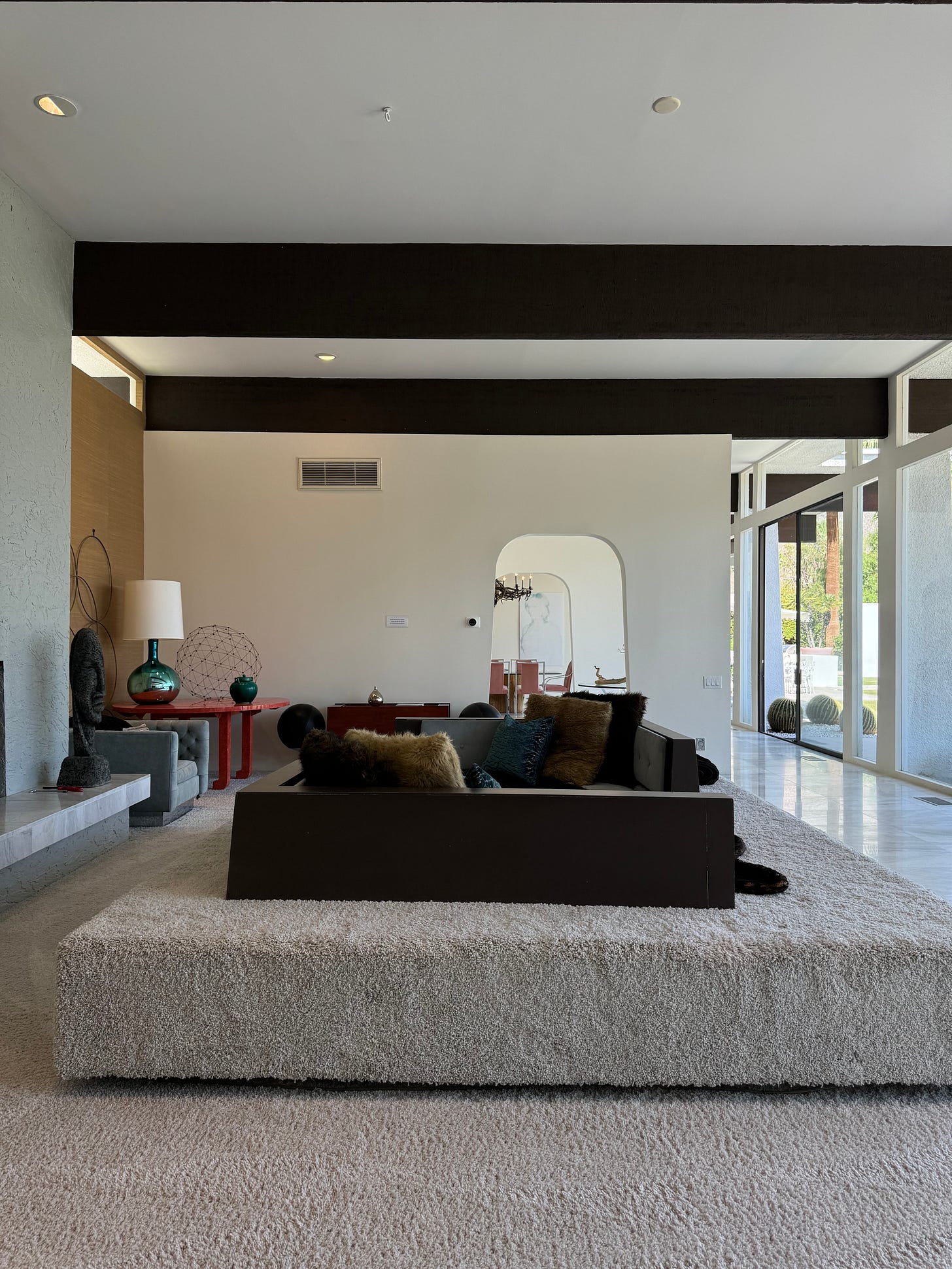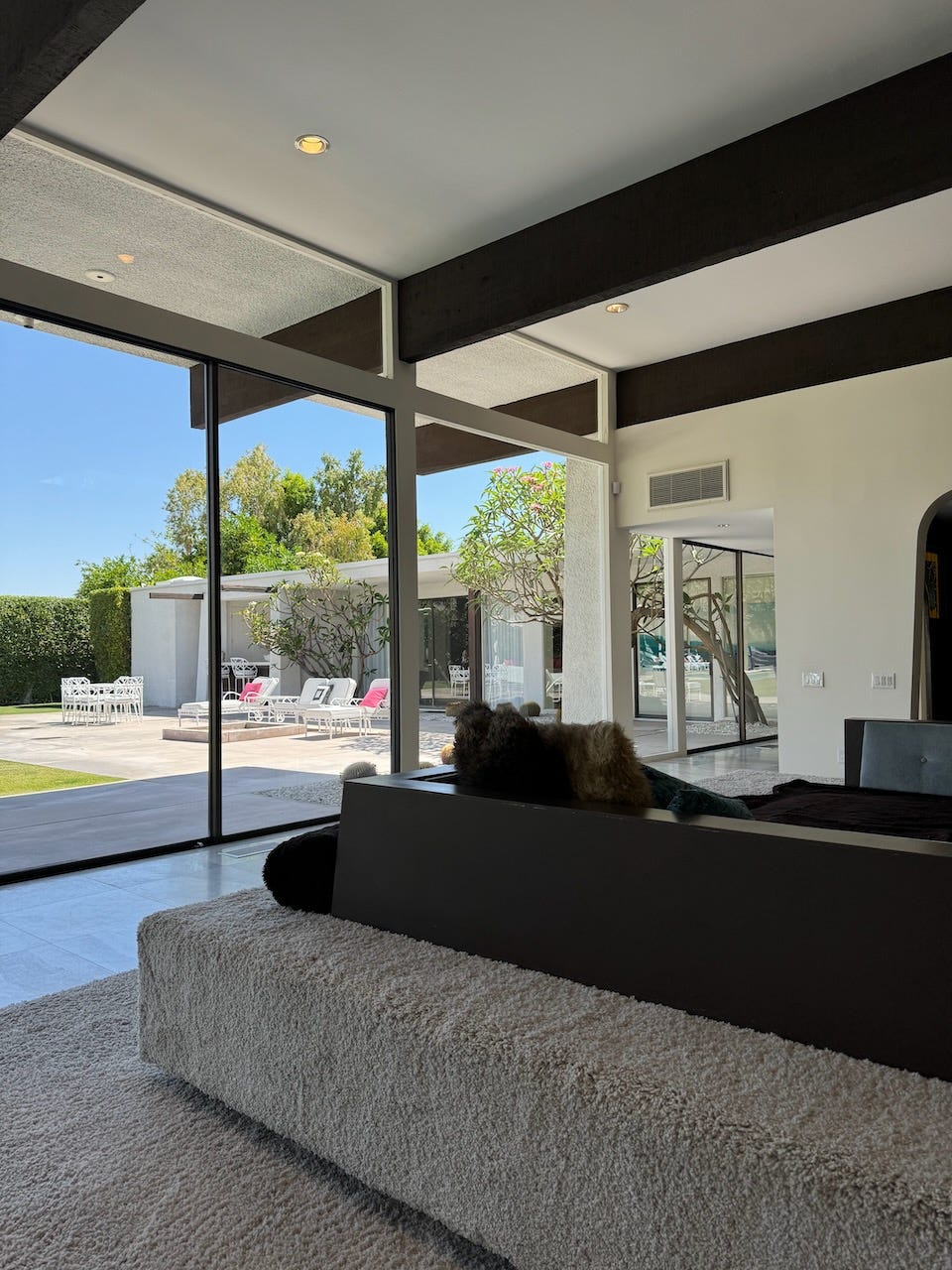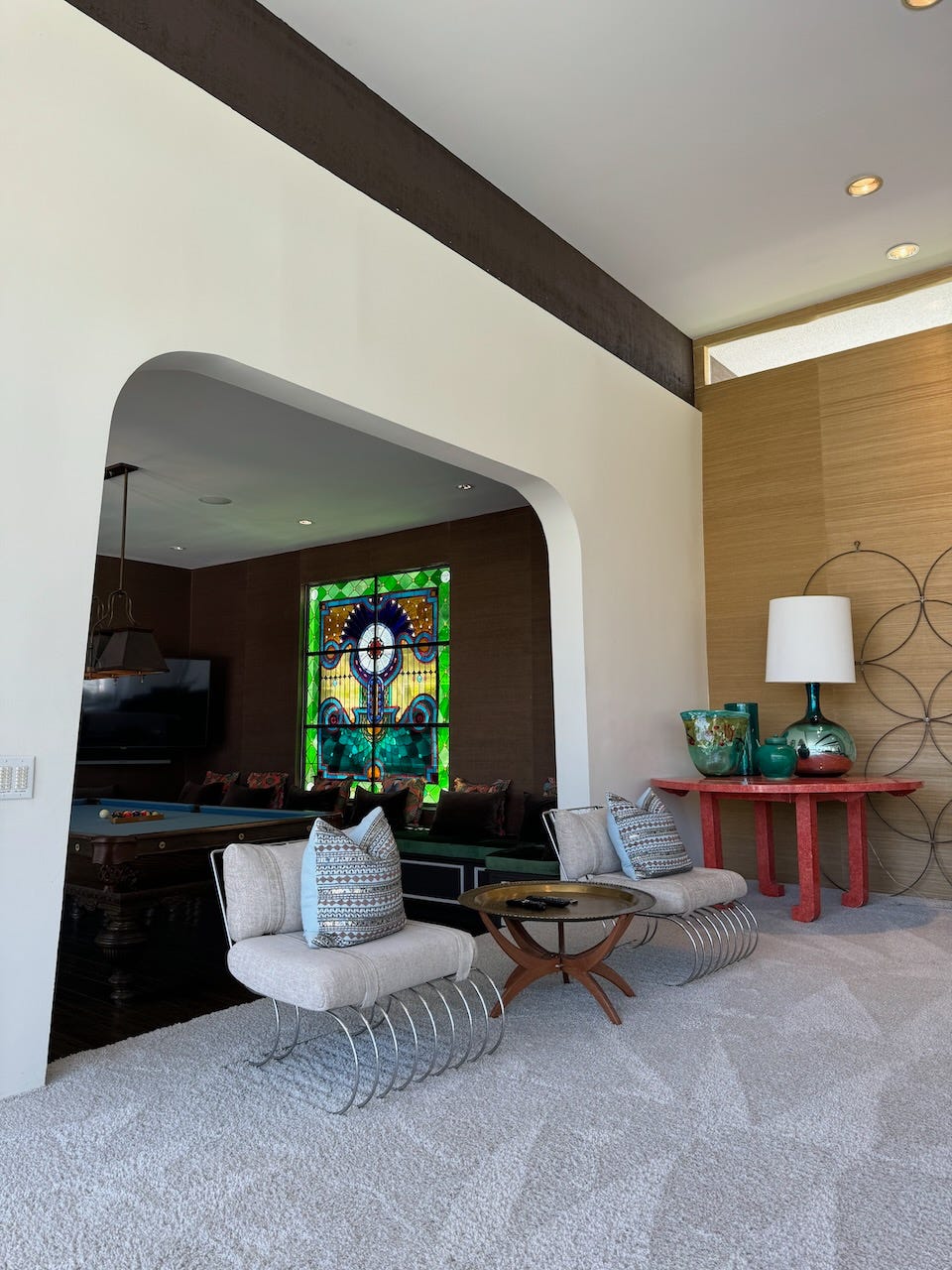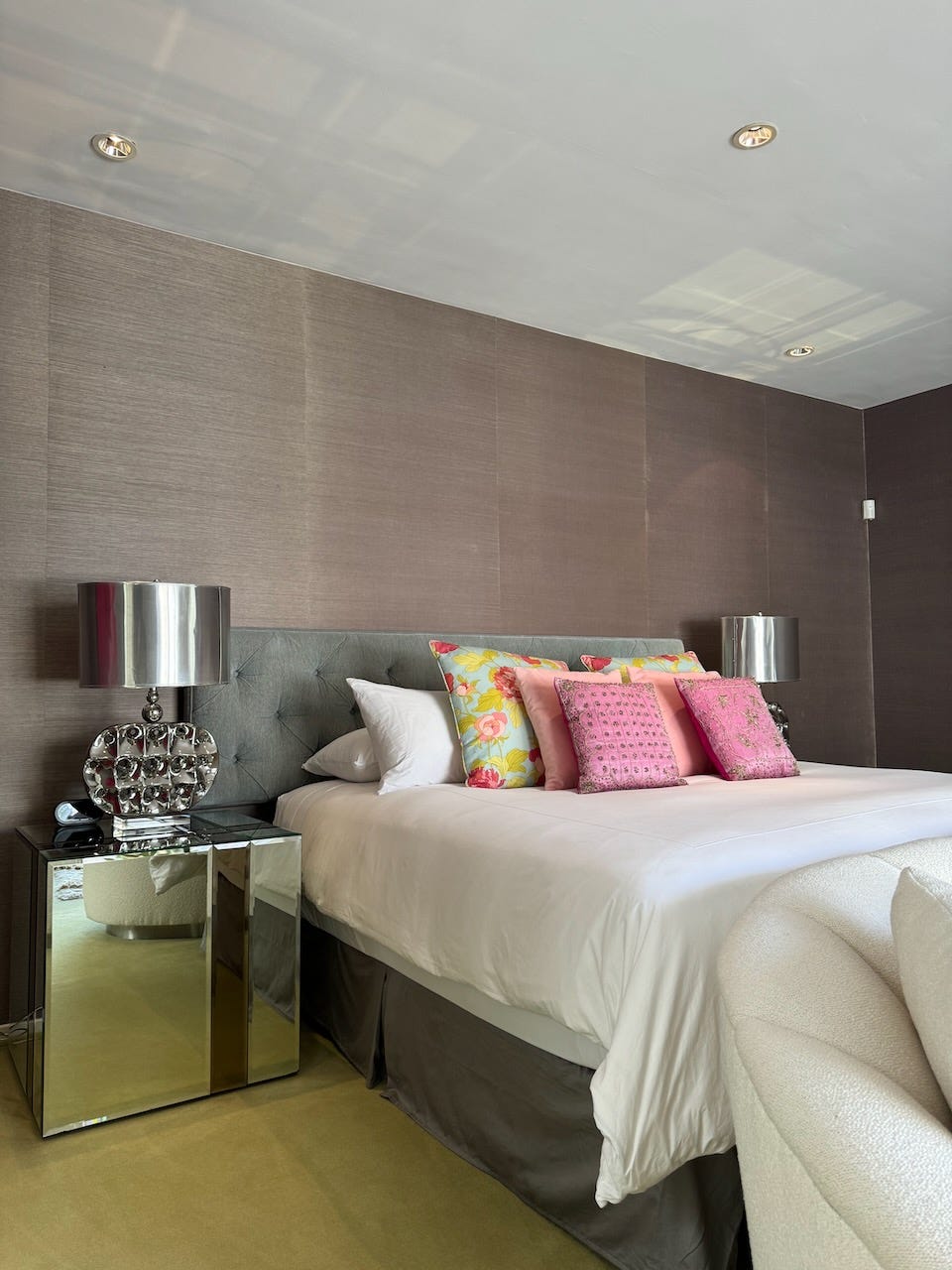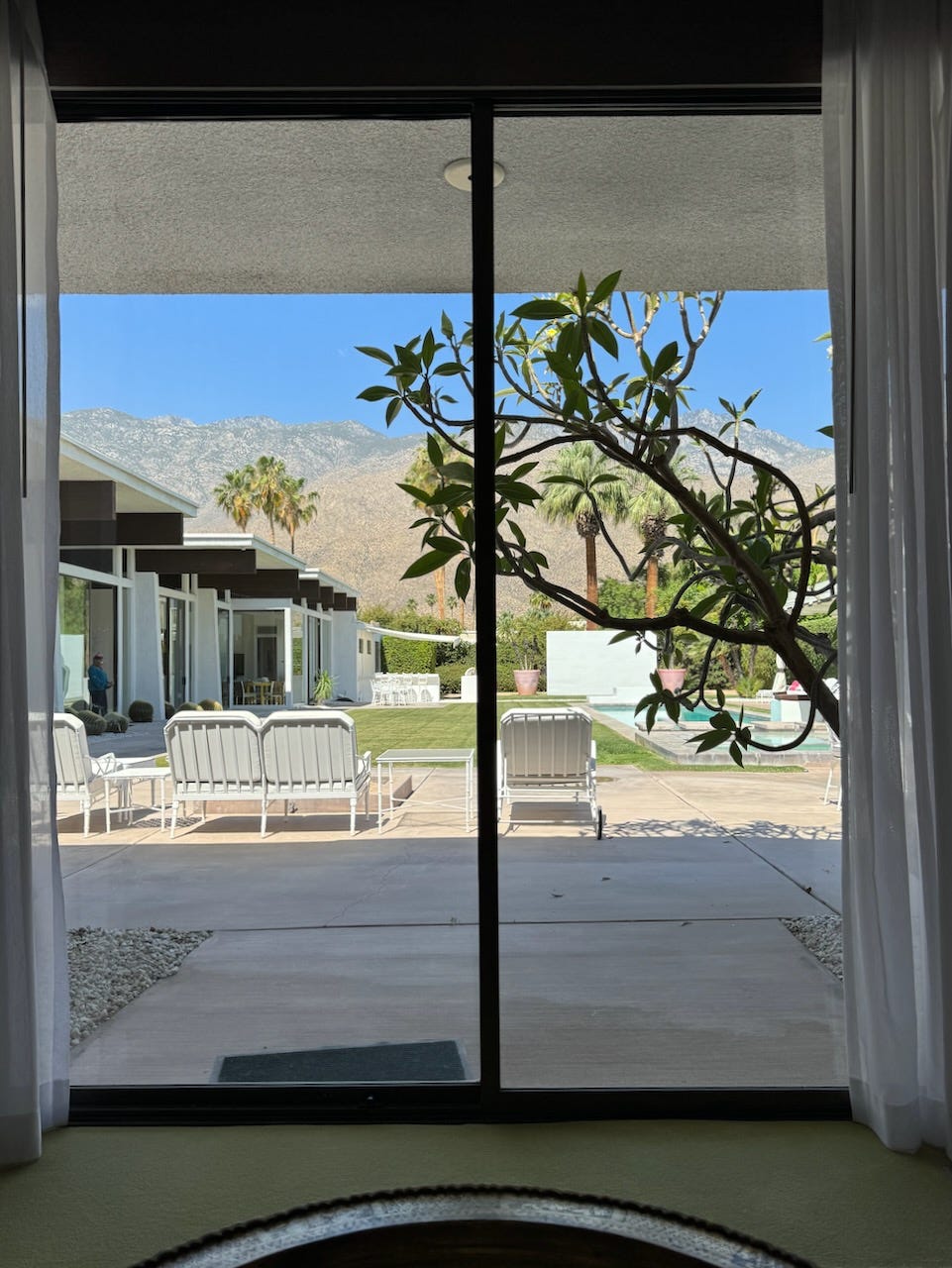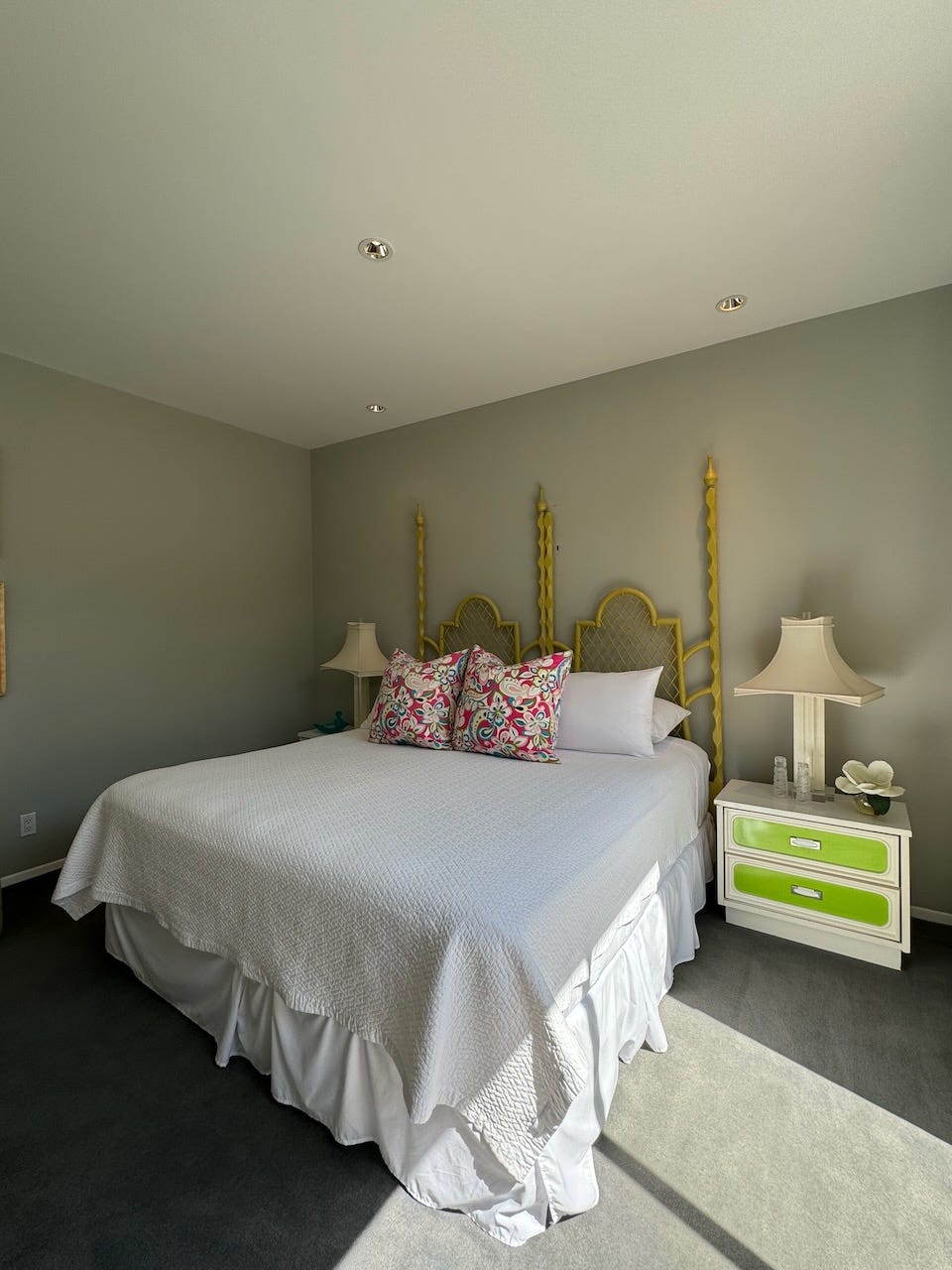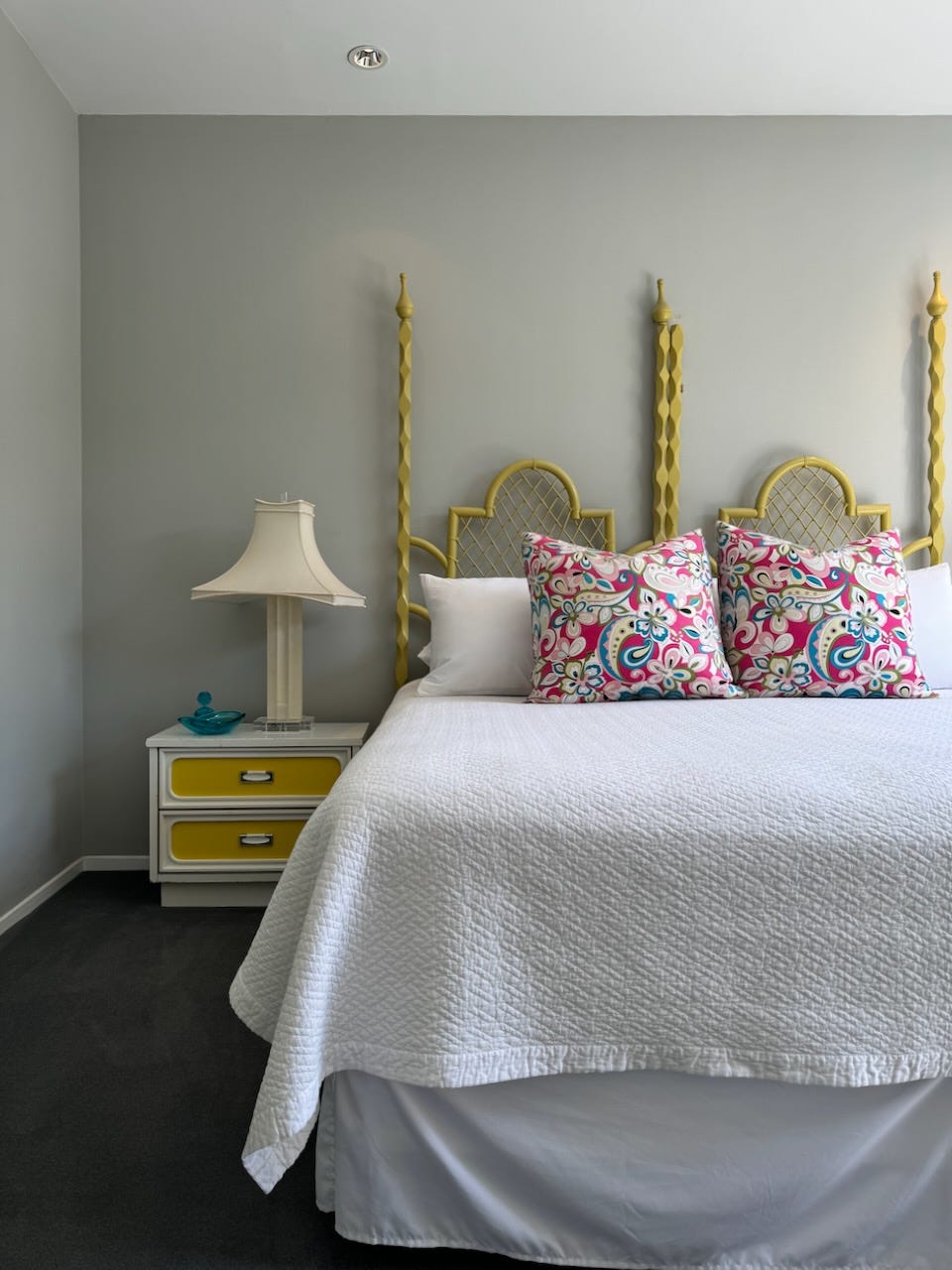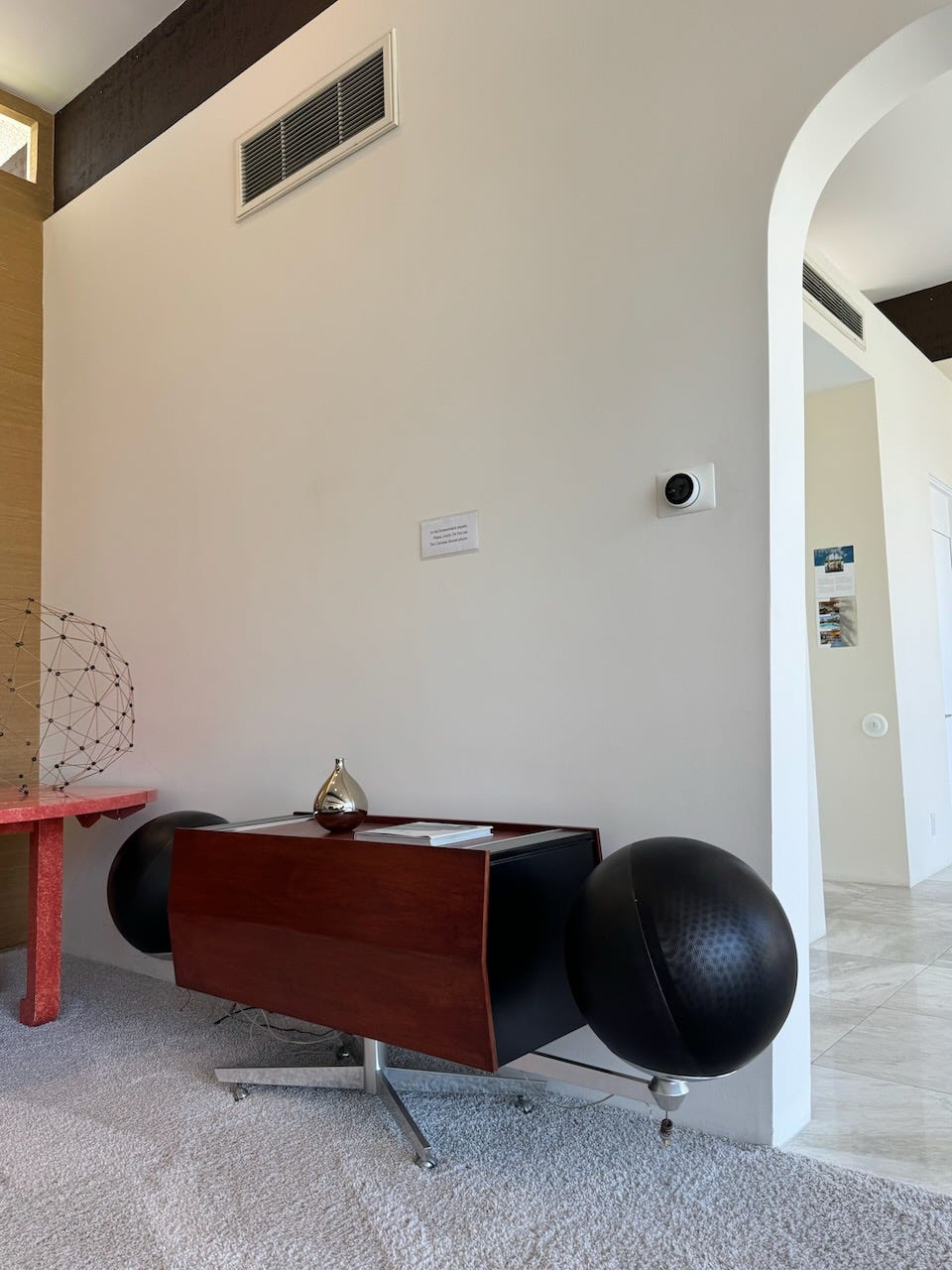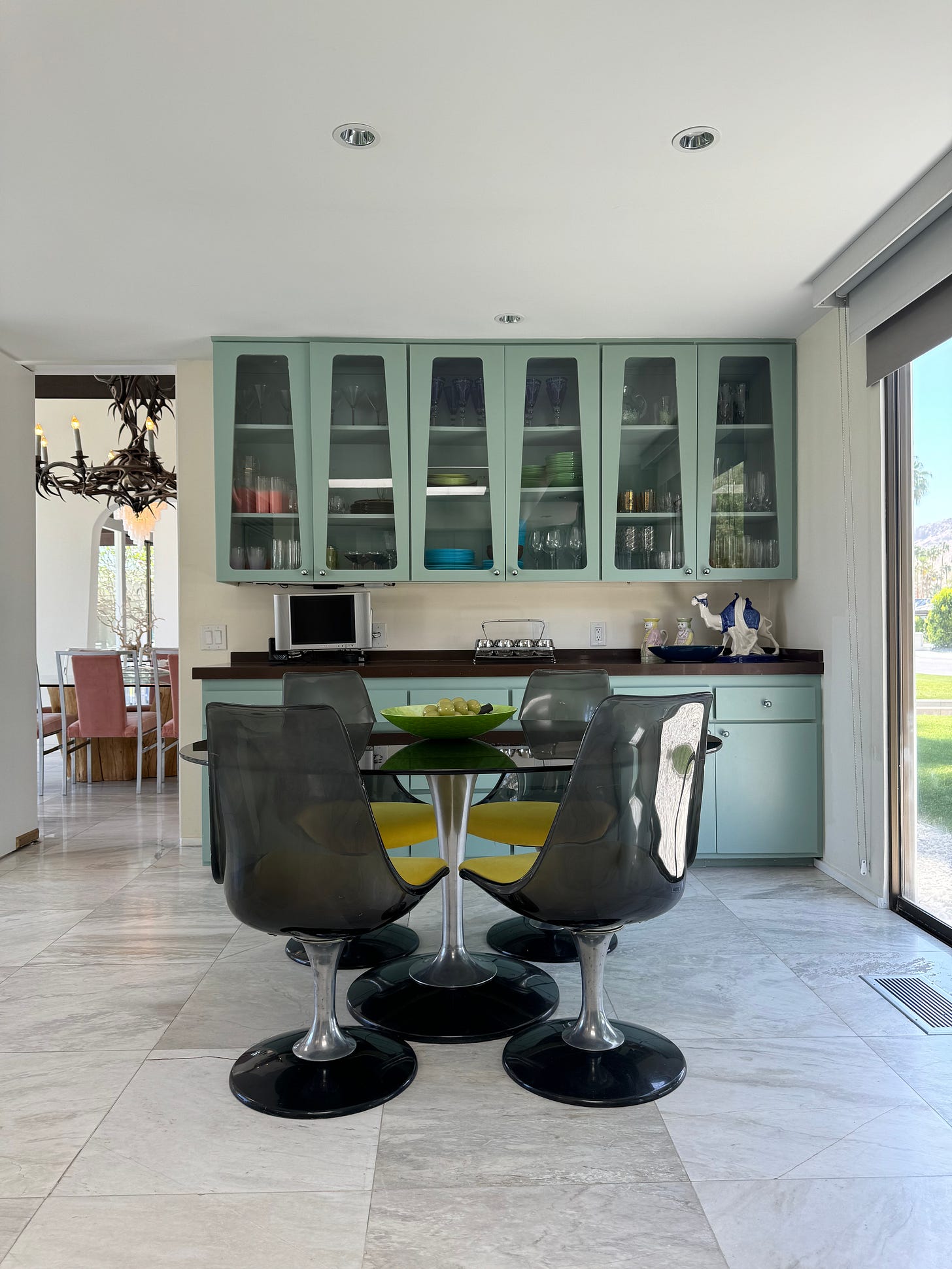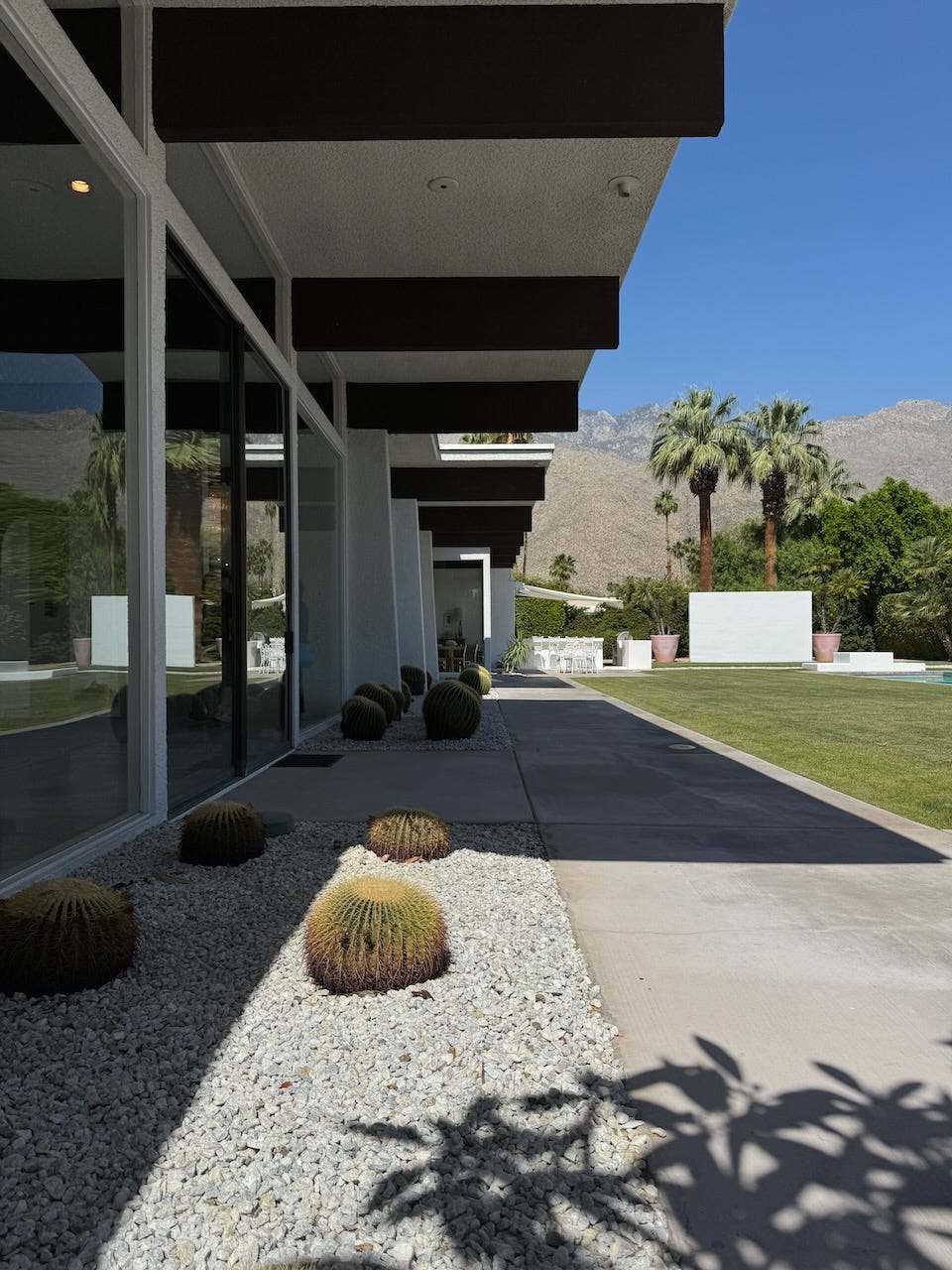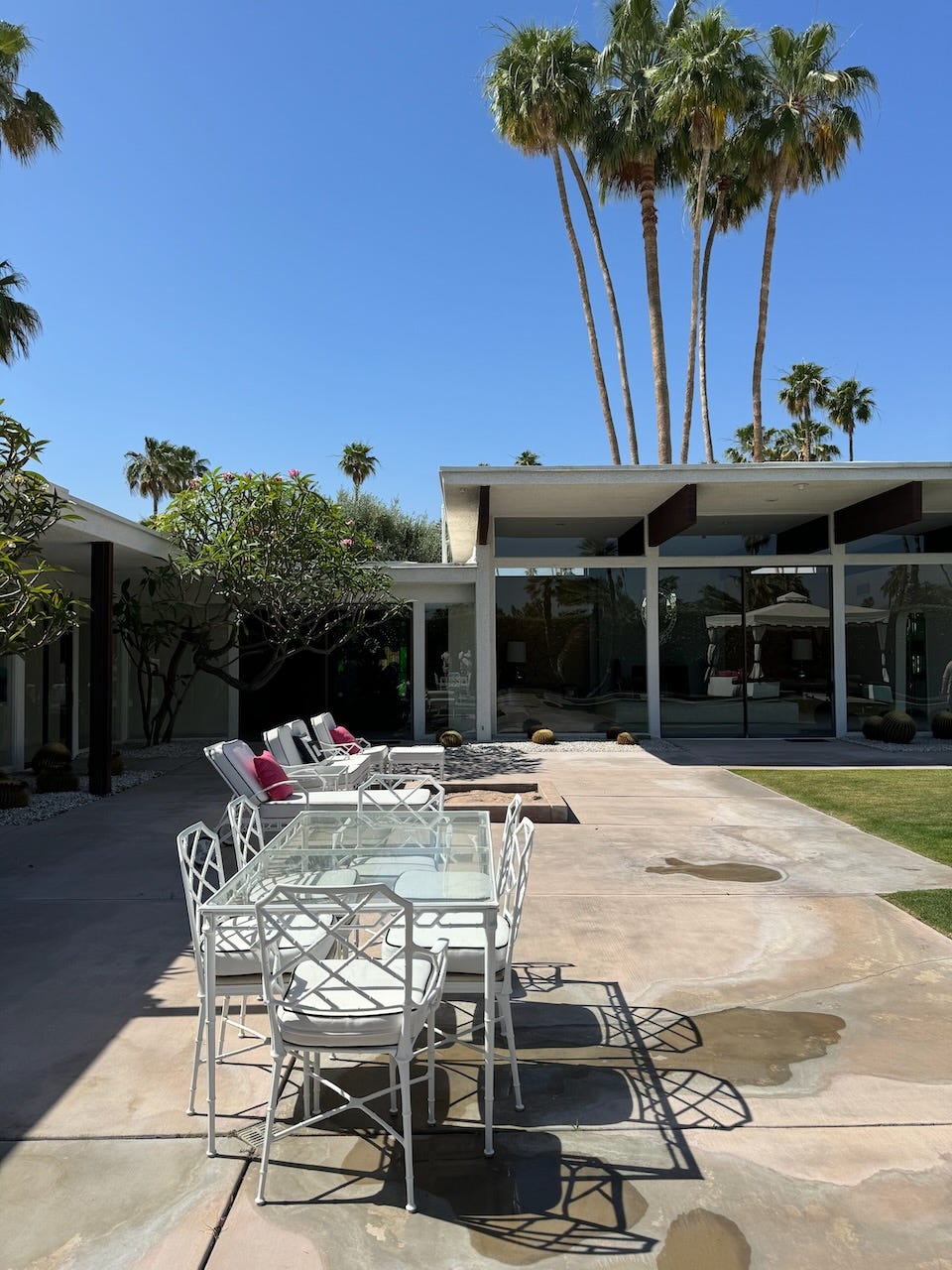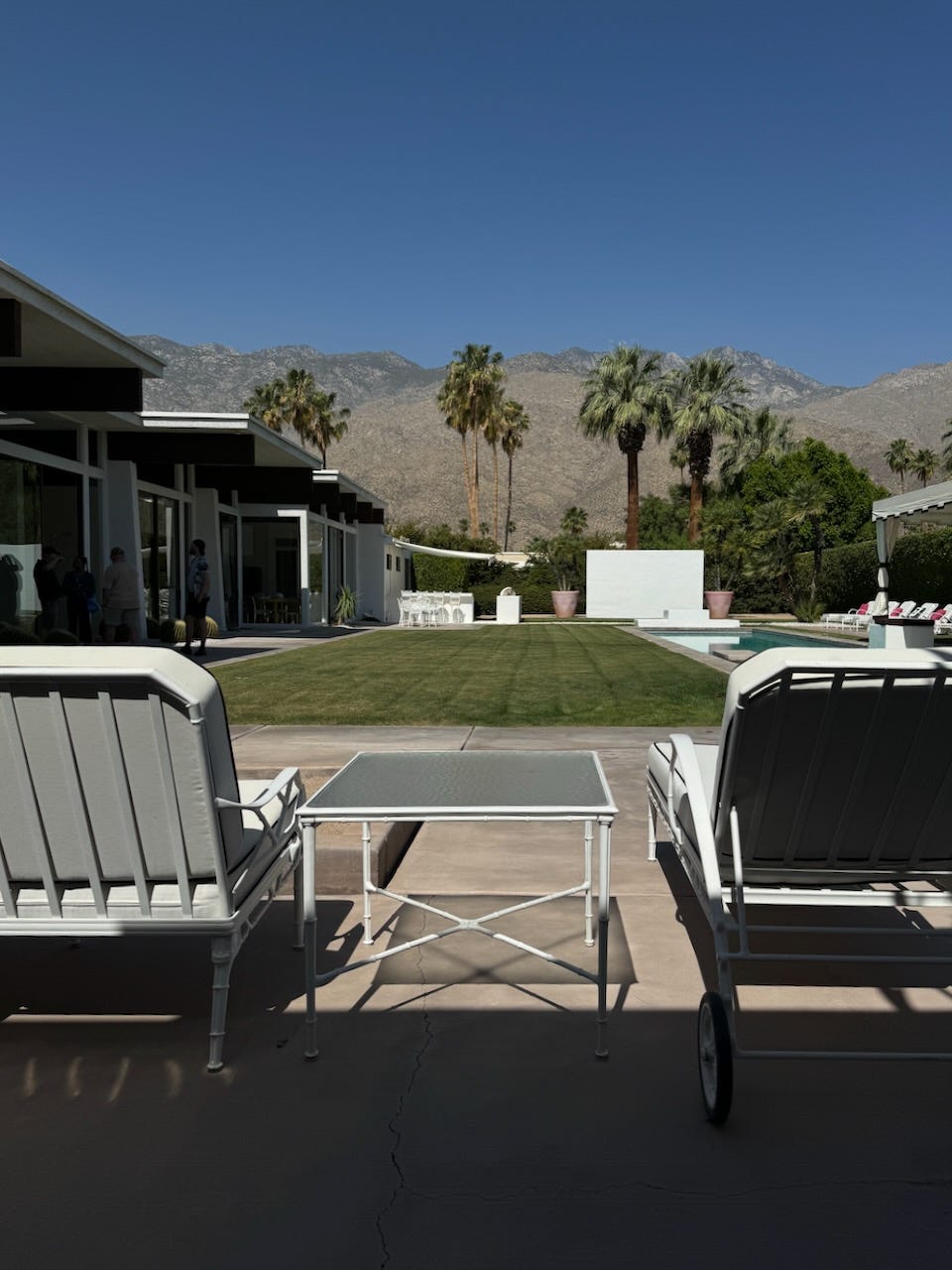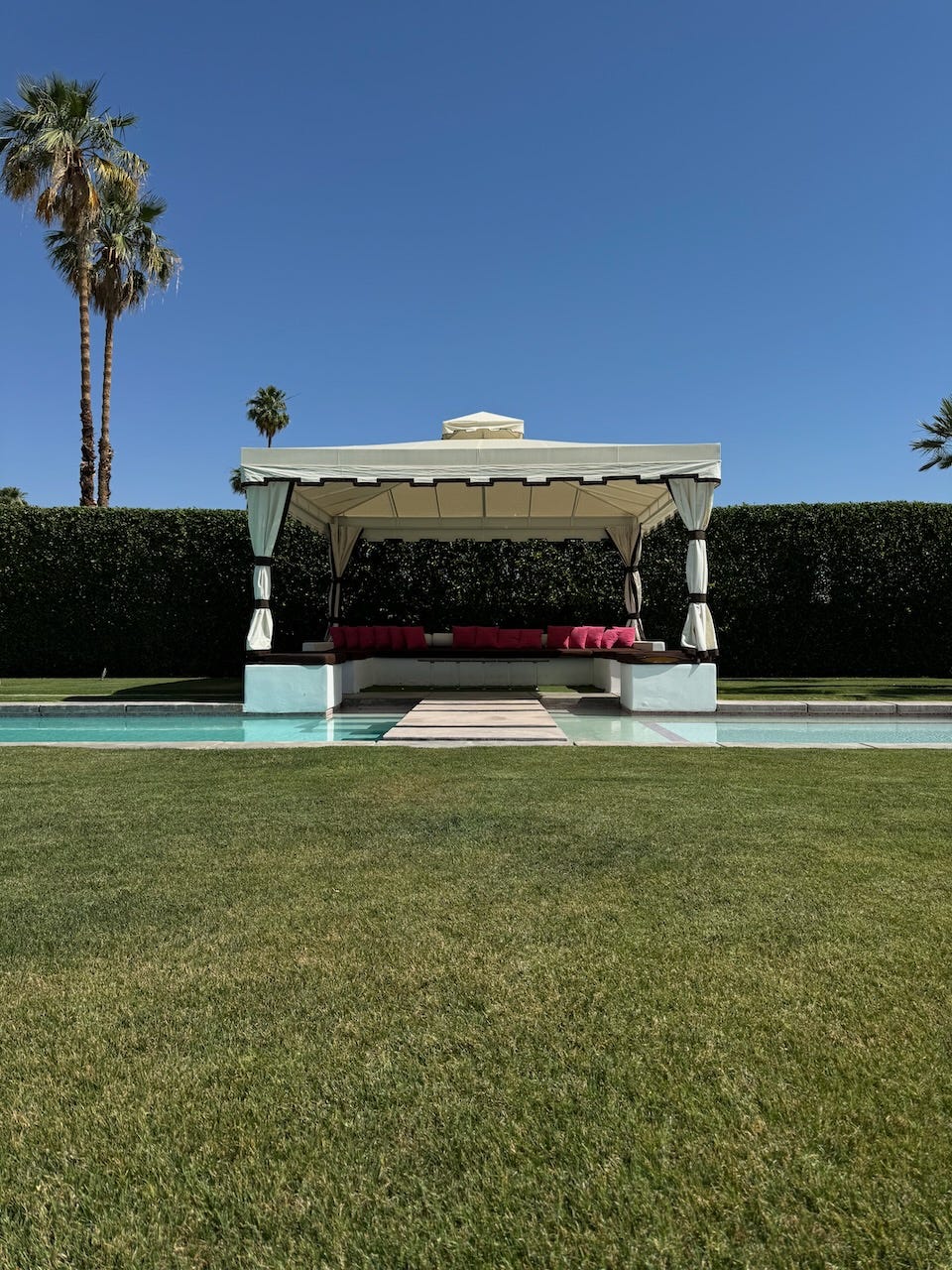Mid-Century Modernism Meets Regency Style in Palm Springs
A lesser-known architect who left a clear mark on the city of palms: James H. McNaughton and his Villa Sierra.
Earlier this year, we visited Palm Springs to explore a few homes and get a glimpse of real-life mid-century modernism in the desert. The first house we had the pleasure of visiting, known as "That Pink Door House," was made possible by Visit Palm Springs, who organised the tour. I want to thank them once again.
Compared to other mid-century homes, this one has a less conventional story due to its designer. James H. McNaughton, an eclectic artist, is a lesser-known figure among the architects who shaped Palm Springs' residential landscape, despite designing several notable homes in the city.
With an unusual background as a set designer in the early years of American television, McNaughton brought a unique blend of mid-century aesthetics and a more flamboyant use of colours and materials to Palm Springs.
While it ticks all the boxes you'd expect from a typical mid-century Palm Springs home, this one has an edge that made me feel as if we were standing in the middle of a Hollywood movie set. I hope you'll feel the same when reading the story below.
(Marco Guagliardo - Mid-Century Home’s Editor in Chief)
Nestled in the Coachella Valley of Southern California, Palm Springs has a fascinating history. Originally home to the Agua Caliente Band of Cahuilla Indians, it became known for its natural hot springs. In the early 20th century, people came for the warm, dry climate and the springs' health benefits. This period saw the rise of many Spanish Colonial-style buildings, with red-tile roofs and white stucco walls, adding a touch of Old World charm.
In the 1920s and 1930s, Hollywood stars began to flock to Palm Springs due to its proximity to Los Angeles. Celebrities like Frank Sinatra, Elvis Presley, and Marilyn Monroe built homes here, turning it into a glamorous retreat.
After World War II, Palm Springs saw a shift to Mid-Century Modernism, a design movement that emerged in the mid-20th century and focused on simplicity, functionality, and a connection to the surrounding environment. This architectural style emphasized clean lines, open floor plans, large windows, and a seamless integration with nature, often incorporating natural materials such as wood and stone.
Mid-Century Modernism was heavily influenced by the International Style, which emphasized volume over mass, balance rather than preconceived symmetry, and the expulsion of unnecessary ornamentation. Its characteristics included flat roofs, smooth façades, and the use of glass, steel, and reinforced concrete. This style promoted the idea that buildings should be designed based on the purpose they serve and the materials used in their construction.
Architects like Richard Neutra, Albert Frey, John Lautner, and William Krisel played key roles in transforming Palm Springs with their innovative designs. Richard Neutra’s Kaufmann Desert House, built in 1946, is one of the most iconic examples of mid-century modern architecture. This house features large glass walls that blur the lines between indoor and outdoor spaces, a flat roof, and a minimalist aesthetic that harmonises with the desert landscape.
But Palm Springs is not only known for its modernist houses. One notable architect who further shaped Palm Springs was James H. McNaughton. He graduated from Carnegie Tech in 1935 and initially worked in television set design. He later moved into architecture, designing the Morrill House in 1961 in Palm Springs, which gained international acclaim.
McNaughton's architectural style is a blend of Hollywood Regency and mid-century modern principles. His designs often feature dramatic spaces, bold color palettes, and luxurious materials, balanced with practical and functional elements. McNaughton had a keen eye for integrating indoor and outdoor living, a hallmark of mid-century modernism, which he skilfully combined with a touch of Hollywood glamor.
One of his most famous works is Villa Sierra, built in 1974, known today as "That Pink Door House." The mid-century desert ranch-style estate you can see in this article, features large rooms with floor-to-ceiling windows, blending indoor and outdoor spaces. The design of Villa Sierra shows the architect’s ability to create a sense of openness and connectivity with the surrounding environment, while also incorporating elements of regency elegance and bold, colourful interiors.
The residence showcases a vibrant and globally inspired art and decor selected by its new owners. Unique features include a Byzantine blue leather sofa, a canary yellow bistro table, and pistachio green kitchen cabinets. The billiard room has a powder-blue pool table and a baroque stained-glass window. The lounge includes a built-in chaise lounge-style sofa and a limited edition Claritone stereo, similar to one owned by Sonny and Cher.
McNaughton's other notable projects include the Morrill House, which also garnered international attention. This house, like Villa Sierra, reflects his distinctive style that merges functional modernism with the luxurious aesthetics of Hollywood Regency. His ability to innovate within the constraints of mid-century modern design principles while adding a personal flair made his work stand out.
Despite financial difficulties and completing only a few projects, James H. McNaughton's legacy lives on through iconic residences like Villa Sierra. Today, this home attracts many admirers and photographers and is often available for private events or weekend getaways, cementing its status as one of Palm Springs' most beloved architectural gems.






